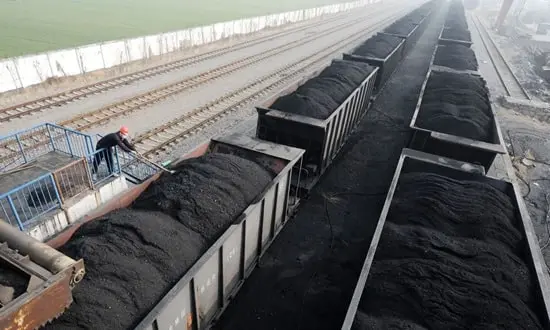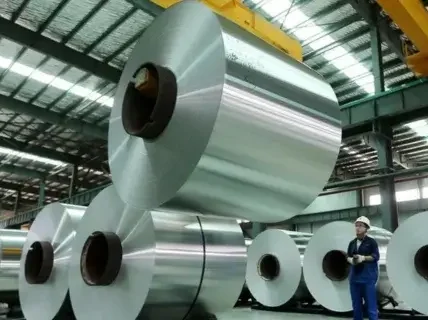The global coal industry is a thriving one, giving air to so many other industries, being their energy supplier and ultimately, being an important part of world economy. In spite of the search for alternative energy source, coal industry remains the primary source even in 2025. Here we are going to offer details about the top 10 largest producing countries of coal in the world till 2025.
1. China: (3,708,155,408,000 Tonnes)
China remains the world’s top coal producer in 2024. China meets its insatiable energy demands for rapid expansion and urbanization using advanced mining techniques and massive coal reserves. China’s coal dependence ensures its leadership despite global efforts to convert to cleaner energy. China produced 47% of the world’s coal in 2019. This was 3.7 billion tons, up 4% from previous year. China’s need for coal is shown in its 53% consumption. China is poised to act on environmental challenges and sustainable practices after President Xi Jinping’s 2020 pledge. The target is carbon neutrality by 2060, a huge shift from coal. China’s annual coal production is expected to stay steady between 2020 and 2021, despite this ambitious aim, according to the IEA. Energy needs and carbon reduction are balanced by the calibrated plan, highlighting the limitations of switching from coal.
2. India: (761,662,038,400 Tonnes)
India produces second-most coal in 2024, behind China. India, one of the fastest-growing economies, relies on coal for electricity. Country’s vast coal reserves and growing coal-fired power facilities improve coal production. India’s energy strategy relies on coal notwithstanding diversification. India produced 783 million tons of coal in 2019, 10% of the world’s. Ministry of Coal produced 893.19 million tons in 2022, continuing the trend. Coal India, the world’s largest coal miner, produces 80% of this. With approximately 360 mines, Coal India meets expanding energy demands. India modified its policy to stimulate development and restrict coal imports. It allowed private companies to mine coal deposits by 2020, diversifying the landscape. Investors seem worried about the development auction of 40 coal mines. Financial institutions are losing interest in coal due to its declining appeal and renewable energy’s rise.
3. United States: (728,364,498,000 Tonnes)
The US produces third-most coal in 2024. Despite a recent drop in coal production owing to cleaner energy sources, the nation still leads the global coal market. The U.S. coal industry responds to market shifts and environmental concerns, showing sustainability. US coal output has continuously fallen, reaching 484.7 million metric tons in 2020, the lowest since the 1970s. The shift toward cleaner energy sources adds to this drop. Despite Trump’s campaign promises to revitalize the coal industry, local power sector fossil energy consumption has declined. Natural gas competition and renewable energy’s improving affordability will keep the decline going.
4. Australia: (554,763,962,900 Tonnes)
Australia is the fourth-largest coal producer due to its vast reserves and advanced mining processes. Leading the global coal supply chain, it exports to Asia. The Australian coal industry is crucial to its economy despite environmental concerns. Australia was the fifth-largest coal producer in 2020 with 550 million tons. Australia delivered 382 million tons of coal in 2018, demonstrating its global coal commerce. Australia exports second-most coal after Indonesia. Australian coal reserves are 147.4 billion tons, demonstrating strategic readiness. This reservoir’s enormous buffer ensures a constant supply and boosts Australia’s coal market position. Australia mines 74% of its coal open-pit. This massive output from 100 coal miners shows the diversity and decentralization of the Australian coal business. Its decentralization allows it adapt to market and industry changes.
5. Indonesia: (502,653,360,000 Tonnes)
Powerful Indonesia ranks fifth internationally with massive coal reserves and a thriving mining industry. Most of this archipelago country’s coal is exported, boosting the worldwide market. Indonesia’s coal production supplies local energy and influences global commerce. Indonesia produces 502.5 million tons of coal, sixth worldwide. Due to coal production, the country competes with Australia in exports. Indonesia leads global coal exports, reversing its coal power advantage over Australia. Australia and Indonesia’s coal export rivalry makes the global coal trade intriguing. Production capacity, market demand, and geopolitics determine Indonesia’s coal export lead.
6. Russia: (423,095,348,300 Tonnes)
Russian coal resources are vast, making it the sixth-largest producer. Rising exports and domestic demand have expanded the coal industry. Russia influences numerous international markets, shaping the global coal trade. Over 5% of world coal production comes from Russia, which has mined 423 million tons. Russia is sixth in coal output, indicating its energy market strategic importance. However, the International Energy Agency anticipates an 8% reduction in Russian coal production by 2020. Lower year-round demand impacts the local market and key export markets like Europe and Korea. Russia’s 162 billion tons of coal reserves, largely in Siberian basins, position it well for global coal trade developments despite this little setback. Russian leaders aim to boost coal output. Plan to generate 670 million tons by 2035. This strategy aids Russia’s energy security and economic prosperity.
7. South Africa: (277,951,564,100 Tonnes)
South Africa ranks seventh in coal production and has substantial resources. This nation relies on coal for energy, and its coal mining industry is crucial to its energy security and the global coal market. South Africa produces 277 million tons of coal yearly, ranking eighth. This huge production makes South Africa a major coal producer, serving local and worldwide demand. South Africa exported 69 million tons of coal in 2018, ranking sixth. Large volumes of coal are exported to Asia and Europe each year.
8. Germany: (193,593,193,800 Tonnes)
Germany ranks eighth in coal output despite its renewable energy concentration. German coal has changed due to a deliberate shift away from coal-fired electricity. Despite this, coal production enhances Germany’s energy mix. Germany decommissioned its last hard coal mines in 2018. German brown coal production remains the world’s largest despite this suspension, showing the challenges of transitioning away from coal. Germany’s long-term plans call for phasing out coal for electricity, yet 35.3% of its power comes from it. Germany’s renewable energy goals conflict with its coal dependency in global rankings. Germany’s coal reserves rank sixth globally, exhibiting depth. Germany uses the fourth most coal, proving its energy significance.
9. Poland: (143,996,028,700 Tonnes)
Poland closed the list as the ninth largest coal producer in 2024. The economy and energy generation depend on coal mining. Despite attempts to move to cleaner energy, Poland still extracts and uses coal, showing its energy significance. Poland’s ninth-place production and 144 billion tons of coal reserves reflect its global standing. Country produces ninth and consumes tenth most coal. Poland no longer exports coal and utilizes it mostly domestically. Poland gets 80% of its electricity from coal, underscoring its energy grid importance. Poland recognizes the need to adapt and seeks to reduce this dependency by 2040. Poland’s ambitious plan asks for gas-fired power as a backup while renewable and nuclear energy sources provide most electricity.
10. Kazakhstan: (113,619,500,900 Tonnes)
Kazakhstan is the tenth-largest coal producer in 2024, showcasing its reserves and mining growth. Kazakhstan’s coal production serves domestic and export demands, making it a worldwide energy player. Kazakhstan’s December 2020 coal production was 113.2 million tons, seventh worldwide. Our coal production has increased to fulfill local and global energy needs as we improve the industry. Kazakhstan’s energy utilization validates its worldwide energy position. Though 12th in consumption, coal provides 85% of the nation’s electricity. This indicates Kazakhstan’s energy infrastructure’s dependence on coal. Over 400 coal mines show Kazakhstan’s coal industry. Kazakhstan’s massive coal mining infrastructure reflects its economic might and determination.
Conclusion:
When it comes to a systematic expansion of the global energy market, coal remains a very important catalyst. The demand is ever growing and to fill the needs, the countries are coming up with new technological supports. To cope up with the demands, these 10 countries are offering the largest proportions.

Brandon is the cheif editor and writer at WorldUnfolds.com. With a passion for storytelling and a keen editorial eye, he crafts engaging content that captivates and enlightens readers worldwide.















